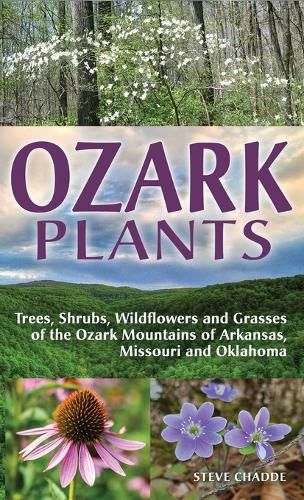Readings Newsletter
Become a Readings Member to make your shopping experience even easier.
Sign in or sign up for free!
You’re not far away from qualifying for FREE standard shipping within Australia
You’ve qualified for FREE standard shipping within Australia
The cart is loading…






This title is printed to order. This book may have been self-published. If so, we cannot guarantee the quality of the content. In the main most books will have gone through the editing process however some may not. We therefore suggest that you be aware of this before ordering this book. If in doubt check either the author or publisher’s details as we are unable to accept any returns unless they are faulty. Please contact us if you have any questions.
Ozark Plants is a full-color field guide to over 500 plant species found in the Ozark Mountain region of southern Missouri, northern Arkansas, and the northeastern corner of Oklahoma. Illustrated with hundreds of color photographs, the book describes each plant followed by a discussion of the plant’s distribution, habitat, and value for wildlife and livestock. A key is provided so that the reader may more easily identify unknown plant specimens.
The Ozark region is a plateau and mountain area of more than 40,000 square miles at the western edge of the eastern deciduous forest, and host a rich assemblage of plant species. Overall, nearly 3,300 vascular plant species are known from the region, within approximately 1066 genera and 186 families. This diversity is due, in part, to a long presence uninterrupted by glaciation, varied site and soil conditions, and a midcontinental geographic position. This geographical location has resulted in many species with distributional centers outside of the Ozarks reaching their range limits here. For example, the range of certain plants from the southwestern United States extends to the Ozarks, typically in dry-soil environments such as the glades. On moist, north-facing slopes, plants from the northern and eastern United States may be found. Some typically southern species occur in special habitats, including many parts of the Boston Mountains.
$9.00 standard shipping within Australia
FREE standard shipping within Australia for orders over $100.00
Express & International shipping calculated at checkout
This title is printed to order. This book may have been self-published. If so, we cannot guarantee the quality of the content. In the main most books will have gone through the editing process however some may not. We therefore suggest that you be aware of this before ordering this book. If in doubt check either the author or publisher’s details as we are unable to accept any returns unless they are faulty. Please contact us if you have any questions.
Ozark Plants is a full-color field guide to over 500 plant species found in the Ozark Mountain region of southern Missouri, northern Arkansas, and the northeastern corner of Oklahoma. Illustrated with hundreds of color photographs, the book describes each plant followed by a discussion of the plant’s distribution, habitat, and value for wildlife and livestock. A key is provided so that the reader may more easily identify unknown plant specimens.
The Ozark region is a plateau and mountain area of more than 40,000 square miles at the western edge of the eastern deciduous forest, and host a rich assemblage of plant species. Overall, nearly 3,300 vascular plant species are known from the region, within approximately 1066 genera and 186 families. This diversity is due, in part, to a long presence uninterrupted by glaciation, varied site and soil conditions, and a midcontinental geographic position. This geographical location has resulted in many species with distributional centers outside of the Ozarks reaching their range limits here. For example, the range of certain plants from the southwestern United States extends to the Ozarks, typically in dry-soil environments such as the glades. On moist, north-facing slopes, plants from the northern and eastern United States may be found. Some typically southern species occur in special habitats, including many parts of the Boston Mountains.